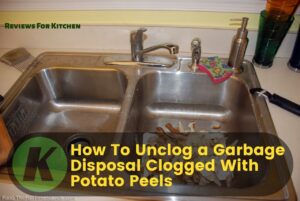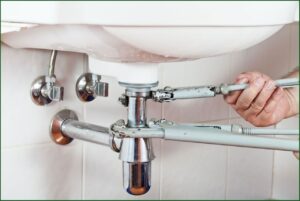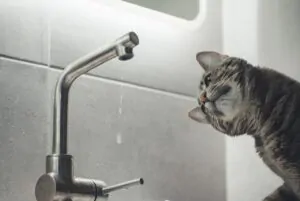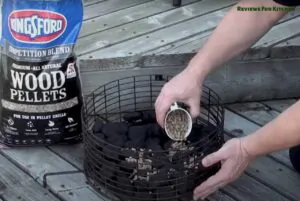If you’ve ever tried to remove a slotted cleanout plug from your home’s plumbing, then you know how frustrating it can be. It seems like no matter what tool or technique you use, it just won’t budge! The good news is that there are several tricks and tools for getting rid of this stubborn piece of hardware. Read on the blog post to learn more about how to remove slotted cleanout plugs with different techniques and decide which one works best for your situation.
A cleanout plug is a removable cap that allows access to plumbing fixtures for inspection or maintenance. You can find it in the horizontal section of drain piping between floor drains and sewer lines, but you can also use it as an emergency vent when needed. Cleaning a room with brass and PVC is the most popular practice, but other materials can also be used.
It’s essential to note that not all plumbing systems feature wash-out plugs. But if they do, then they should have at least one per system. You can find it in the main waste line or drain stack near the foundation of your home. However, you can also use this type of hardware to fix drains if you need maintenance rather than repairs.
Why it's so difficult to remove some of them?
Depending on your experience with metallic drain plugs and the lack of solid material in the center, you may find a slotted cleanout plug strange at first glance; nonetheless, removing this type of hardware is a simple process when you use a unique tool. Without the tool, it can be tough to remove this type of cleanout plug.
Some techniques to remove cleanout plug
There are various tools on hand for removing slotted clean-out plugs, but the most common is an S-wrench or a plumbing snake. This tool features an adjustable head that can fit into tiny openings and securely grip round surfaces like those found on many types of hardware. Once it’s in place, you can use your hand to turn the handle and easily remove even the most stubborn piece of hardware.
If you don’t happen to have an S-wrench or plumbing snake on hand, you can also try using a pair of locking pliers instead. However, this option is less than ideal because it puts more strain on your hands when turned at odd angles while working in a tight space.
Some alternate ways "how to remove slotted cleanout plug"
If you don’t get any of the above tools, check with your local hardware store to see what they recommend for your situation. The odds are that there’s a tool out there that will work well and save you from making an expensive trip back to the store!
Another option is to use heat as a way of loosening up the slotted clean-out plug. Apply heat to the outside of the hardware, then give it a few minutes to do its job before trying again with an S-wrench or pair of locking pliers. Even though this option takes more time and effort on your part, using heat is generally safer than other methods. This is because there’s no risk of damage to the surrounding area.
It’s also possible to try hammering back and forth on an S-wrench or a plumbing snake to break loose or dislodge the slotted cleanout plug. But we will recommend it as a last resort because it can damage your home if you are not careful enough! As with heat treatment, you should wait a few minutes and check again to see how much progress you’ve made before hammering.
Be sure that the area is well-ventilated when using heat or a blow torch, as they can release dangerous fumes into your home if not used properly! It’s also wise to use care around electrical systems since even a small spark from an exposed wire can cause a fire that’s difficult to extinguish.
Last resort
If you don’t have any of the above tools or techniques available, hiring a plumber for this type of job may be wise. This is because there are other options not covered here. However, if you’re assured of your abilities and want to save money by doing the work yourself, you can always try some of the above tricks. This will enable you to see how they work first.
If you’re having trouble removing the slotted clean-out plug, don’t hesitate to contact your local plumber for more help on how to remove the cast iron clean-out plug or other types of hardware that may be outside of your comfort zone! They’ll have all the tools and techniques necessary to get the job done quickly and efficiently.
Related Article: How To Remove A Stuck Faucet Stem?
Things to remember
When you’re removing a clean-out plug, there are a few key things to remember.
First of all, confirm that the area is completely dry before trying anything. This means turning off the main water supply and waiting until it’s safe for workers to enter your home or business. This is due to how slippery wet floors can be!
Secondly, take the time to get the right tool for removing the slotted cleanout plug. You should have an S-wrench or a plumbing snake on hand, but you can also use locking pliers in a pinch if necessary.
Finally, remember that heat and hammering are temporary measures since they don’t always work as expected. If not used properly, they can also damage your home, so it’s crucial to use caution when trying these techniques.
FAQs
There are four different types of cleanout plugs that you might find in your home or business: slotted, no-hub, threaded, and compression. No matter what kind you have, you should remove it before repairing it.
You can try three different methods when removing a no-hub cleanout plug: locking pliers, a deep socket, and drilling. First, use the locking pliers to grip the exposed edges of the plug. Next, attach a deep socket to turn it. Finally, if the above two methods don’t work, you can drill a hole into the plug to better grip.
The most effective way for removing a threaded cleanout plug is with an easy-out tool and some grease. Start by putting grease on the end of the easy-out tool, then slide it into the clean-out plug. Next, use a hammer to tap on the end of the tool until the plug loosens enough that you can turn it with your other hand.
Removing a compression cleanout plug is no different than removing a threaded plug. The only distinction is that you need to use an easy-out tool with a hexagonal head instead of a star head.
A cleanout plug helps you to do repairs on the sewer line near your home or business. A drain stopper helps you to stop water from entering your sink until you repair it.
Related articles about kitchen faucet
- Kitchen Faucets Buying Guide | Complete Buying Guide
- How to Clean Delta Kitchen Faucet Head?
- How To Clean Pur Water Filter Faucet Mount?
- When is it Time to Replace a Faucet? – 8 Clear Signs
- How to Measure a Kitchen Sink – Step By Step Guide
- How to Caulk a Kitchen Sink : 12 Easy Steps
- When is it Time to Replace a Faucet? – 8 Clear Signs
- What Are The Standard Sizes For Kitchen Faucets?
- Kitchen Faucet vs Bathroom Faucet – What’s The Difference?
- How to Replace Delta Kitchen Faucet Sprayer Hose? – Real Solution!
- The Best Ways to Get Rid of That Chemical Smell Under Kitchen Sink
- How To Unclog A Garbage Disposal Clogged With Potato Peels?













